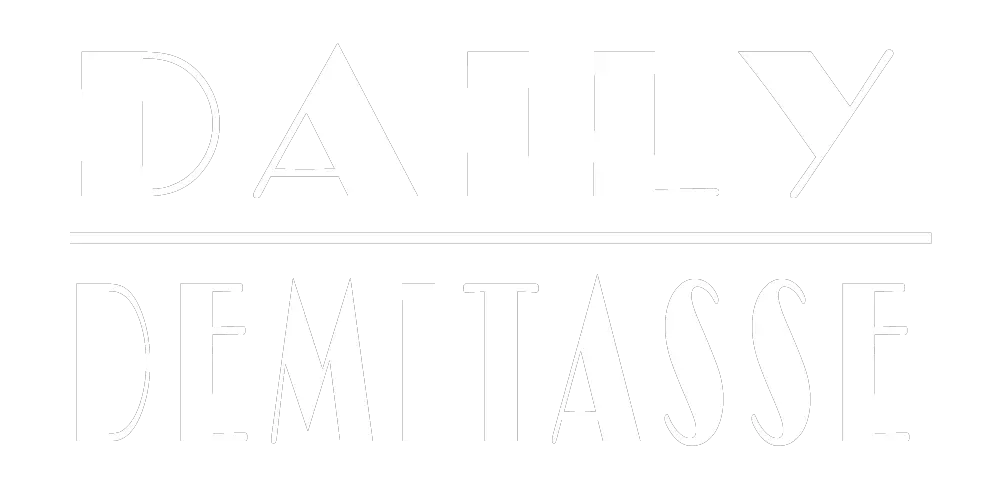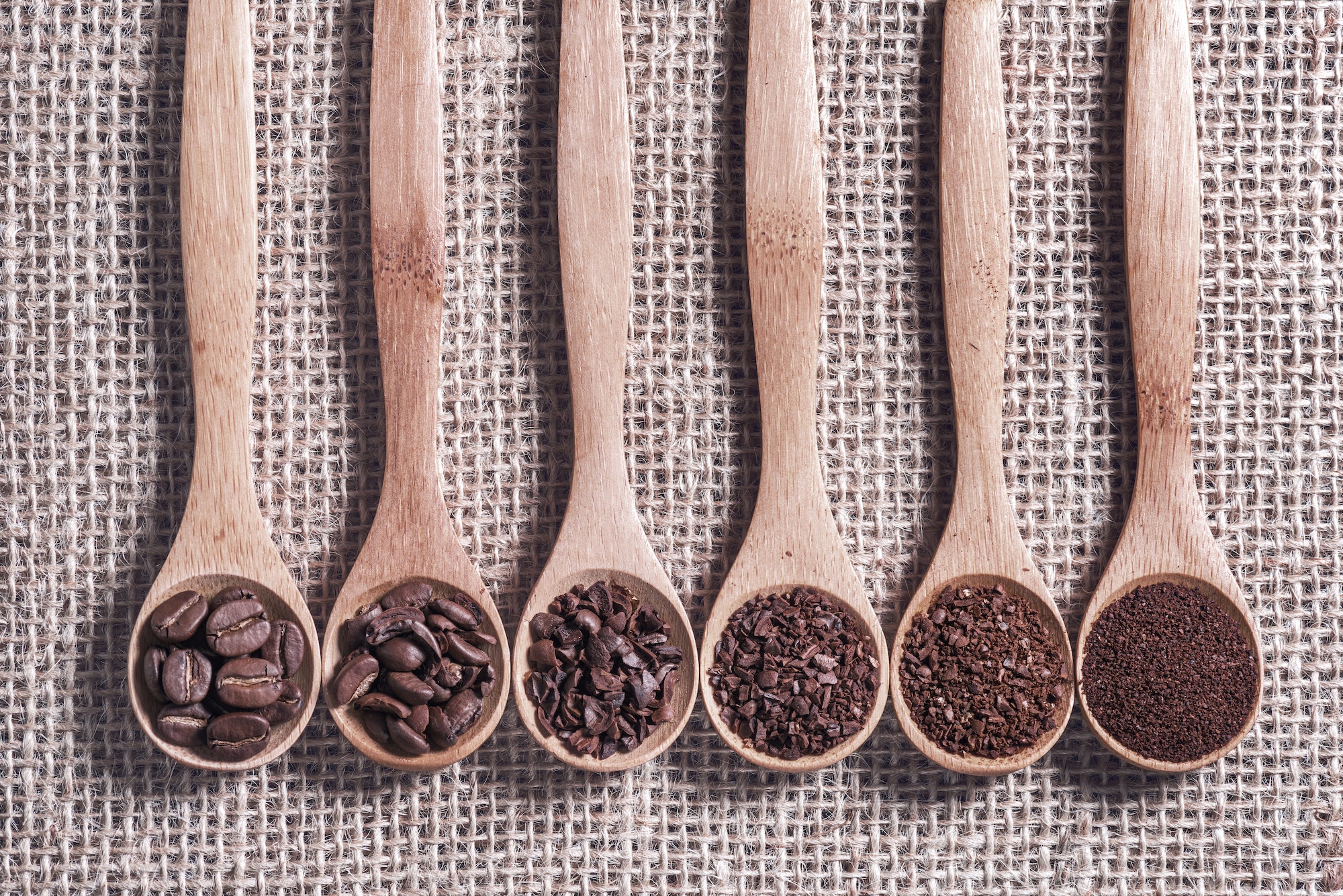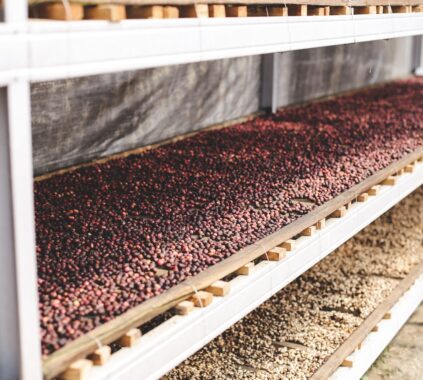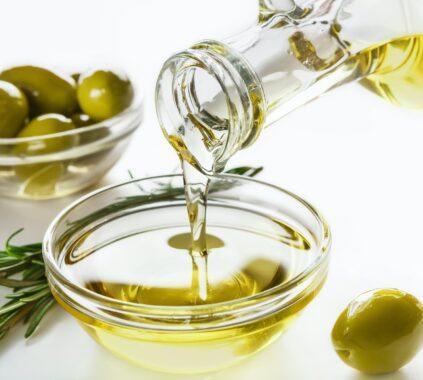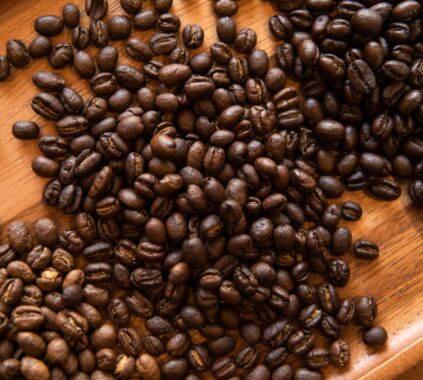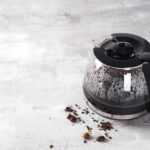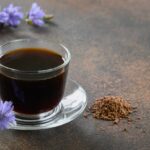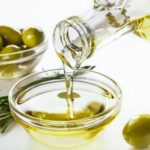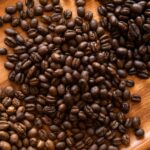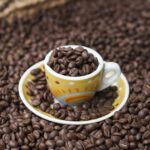Table of Contents
The Grind
If you’re a coffee lover, you know that a good cup of coffee starts with the right grind size. But what exactly does that mean? In this article, we’ll explore the different grind sizes—coarse, medium, fine, and extra fine—and discuss their impact on the brewing process and the final taste of your coffee.
Check out the Coffee Corner on our blog.
Understanding Coffee Grind Sizes

Coffee grind size refers to the size of the coffee particles after the beans have been ground. There are four main categories of grind sizes: coarse, medium, fine, and extra fine.
Coarse Grind
A coarse grind resembles sea salt, with larger, chunky particles. This grind size is ideal for brewing methods that require a longer extraction time, such as French press or cold brew.
Medium Grind
A medium grind looks like regular sand and is the most versatile grind size. It’s suitable for various brewing methods like drip coffee makers, pour-over, and siphon brewers.
Fine Grind
A fine grind has a texture similar to table salt or sugar. This grind size is perfect for espresso machines, which require higher pressure and a shorter extraction time.
Extra Fine Grind
An extra fine grind is almost powdery, like flour. This grind size is typically reserved for Turkish coffee, which uses a unique brewing method that involves boiling finely ground coffee in water.
Importance of Grind Size in Brewing
The grind size plays a crucial role in the brewing process and the final taste of your coffee.
Extraction Process
The extraction process is when water interacts with the coffee grounds to dissolve flavors and compounds. The grind size affects the rate of extraction: a finer grind will extract more quickly, while a coarser grind will take longer. The right balance of extraction is essential for a tasty cup of coffee; under-extraction can lead to sour, weak flavors, while over-extraction may result in bitterness.
Brewing Methods and Grind Size
Different brewing methods require specific grind sizes to achieve optimal extraction. For example, a French press requires a coarser grind to prevent fine particles from passing through the mesh filter. On the other hand, an espresso machine needs a fine grind to create the necessary pressure and achieve a rich, bold flavor.

Choosing the Right Grinder
To get the perfect grind size, you’ll need a suitable coffee grinder.
Blade Grinders
Blade grinders use a spinning blade to chop coffee beans into smaller particles. While they’re affordable, they produce an inconsistent grind size, which can affect the taste of your coffee.
Burr Grinders
Burr grinders crush coffee beans between two revolving abrasive surfaces, resulting in a consistent grind size. These grinders are more expensive but offer better control over the grind size, allowing you to fine-tune your coffee’s taste.
Manual vs. Electric Grinders
Both manual and electric grinders have their advantages. Manual grinders are typically cheaper and portable, making them great for travel. Electric grinders offer convenience and speed, but they tend to be more expensive and less portable.
Tips for Achieving the Perfect Grind
Here are some helpful tips to ensure you get the perfect grind for your coffee:
Measuring Your Coffee
Use a kitchen scale to measure your coffee beans accurately. This will ensure you have the right coffee-to-water ratio for your preferred brewing method. Check out this coffee scale!
Grinding Fresh
Grind your coffee beans just before brewing for the best flavor. Pre-ground coffee loses its freshness and aroma more quickly.
Storing Your Coffee
Store your coffee beans in an airtight container away from direct sunlight and heat to preserve their freshness.
Grind
Understanding grind size and how it affects the brewing process is key to making a delicious cup of coffee. Experiment with different grind sizes and brewing methods to find the perfect combination that suits your taste buds. And don’t forget to invest in a quality grinder to ensure a consistent and satisfying coffee experience.
Check out our guide on coffee roast levels!

FAQs
- 1. Can I use the same grind size for all brewing methods? No, different brewing methods require specific grind sizes for optimal extraction and flavor. For instance, a French press works best with a coarse grind, while espresso machines need a fine grind.
- 2. How do I know if my coffee is under-extracted or over-extracted? Under-extracted coffee may taste sour, weak, or lack body. Over-extracted coffee can taste bitter and astringent. Experiment with grind size and brewing time to find the right balance for your preferred taste.
- 3. Is it necessary to invest in an expensive coffee grinder? While an expensive grinder isn’t a requirement, a good-quality grinder will provide a consistent grind size, ultimately leading to better-tasting coffee. Burr grinders are generally preferred over blade grinders for this reason.
- 4. How long should I store my coffee beans? Ideally, you should use your coffee beans within 2-4 weeks of their roast date for maximum freshness and flavor. However, proper storage in an airtight container away from sunlight and heat can help preserve their quality.
- 5. Can I use pre-ground coffee for different brewing methods? Pre-ground coffee typically has a medium grind size, which may work for some brewing methods like drip and pour-over. However, using pre-ground coffee for methods that require coarser or finer grinds may result in suboptimal extraction and flavor. It’s best to grind your beans fresh according to the specific brewing method you’re using.
Daily Demitasse is a participant in the Amazon Services LLC Associates Program, an affiliate advertising program designed to provide a means for sites to earn advertising fees by advertising and linking to Amazon.com. We also participate in other affiliate programs which compensate us for referring traffic.

